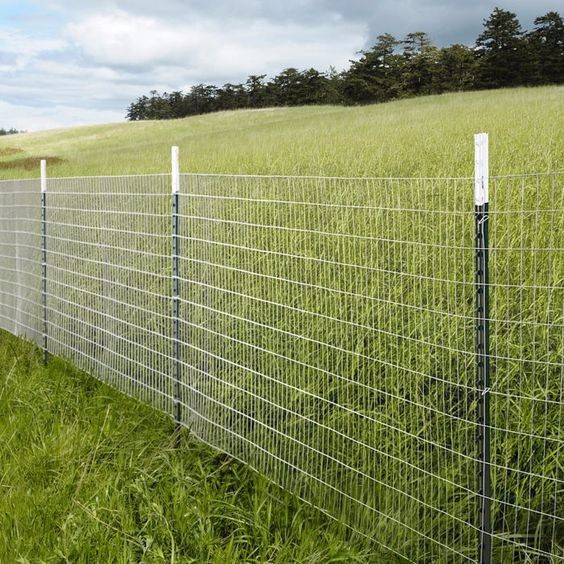Why We Chose T-Posts For Line Posts and Not Wood or Steel Posts?
At the last-minute we switched from wood to steel T-Posts. He made it clear that we were taking on a lot of work putting in wooden posts — auguring individual holes
for 90 line posts and then back-filling them was going to take a long time. With T-Posts you just bang them in with a hefty hand-held punching device. He was right, we
didn’t have the time to install wooden line posts. There’s also the added benefit that rust protected steel T-Posts are going to last longer than treated wood. We
have straight steel posts in an old vineyard on the property and while they are cheaper than T-Posts, they clearly aren’t as good at staying straight and strong.

How Much Space Between Vines, Line Posts and the Rows?
I’ve read in a few places that 24 feet is regarded as the maximum space you can have between line posts so we opted for that. Our rows are quite short at about 160 feet so we wouldn’t be putting the sort of stress on the posts that longer rows would. However, I became worried that we would be opening ourselves to greater chances of the wind pushing over our trellis. He made it clear that whatever the size of the gap between line posts you can never guarantee that the wind won’t blow over your trellis. He advised that a 24 feet gap should be fine but if we ended up having to put in more posts then we could still do that and with T-Posts it would be simple. So we stuck with a 24 foot spacing and we plan to plant vines 8 feet apart (a standard width recommended by most experts for vigorous hybrid vines) and we’ve spaced the alley between the rows at 12 feet wide. A width between the rows of 10 feet seems to be more standard in the Midwest but we have plenty of space so we thought we might as well do 12 to give the vines more space and ventilation, possibly helping reduce disease.

